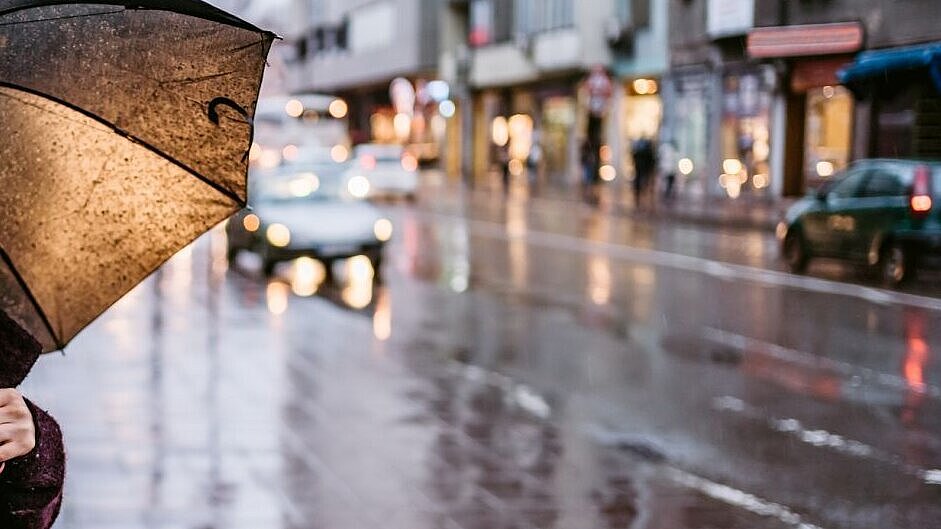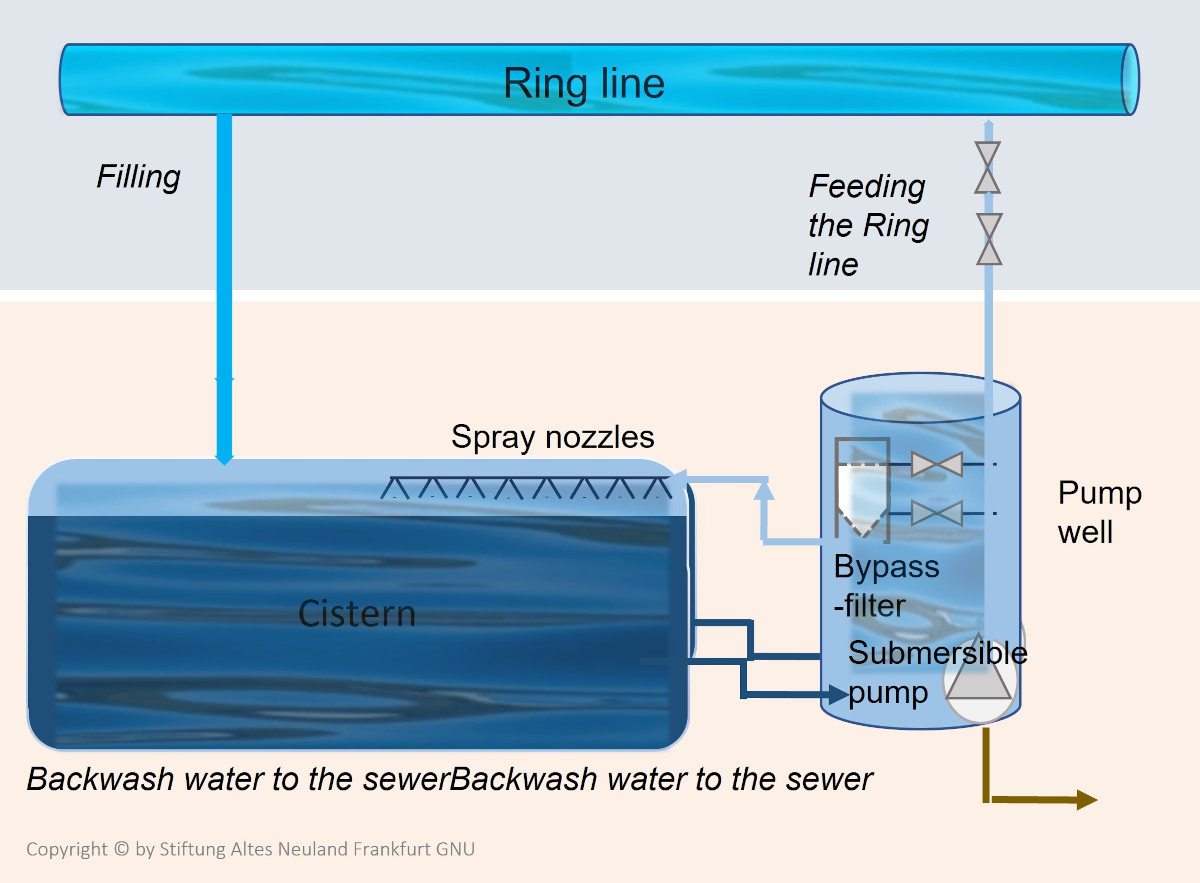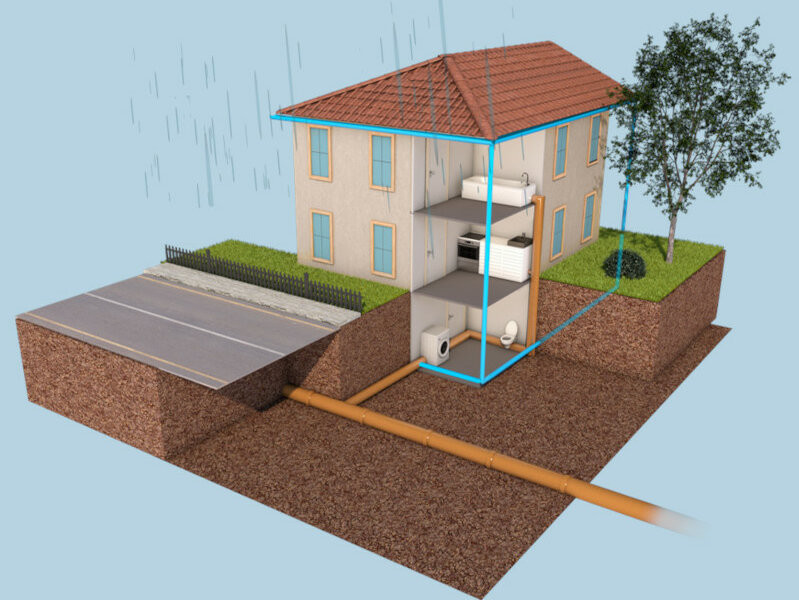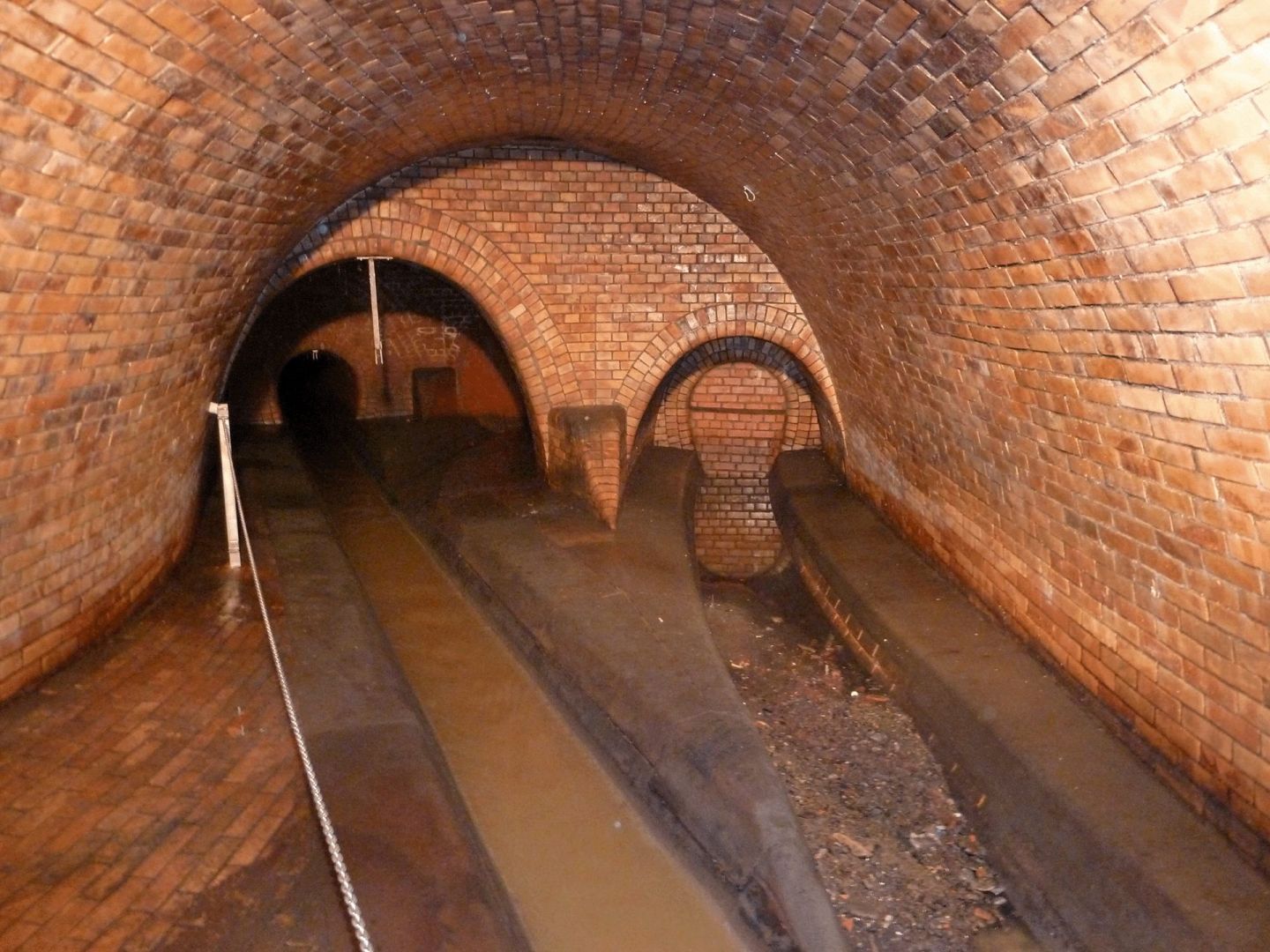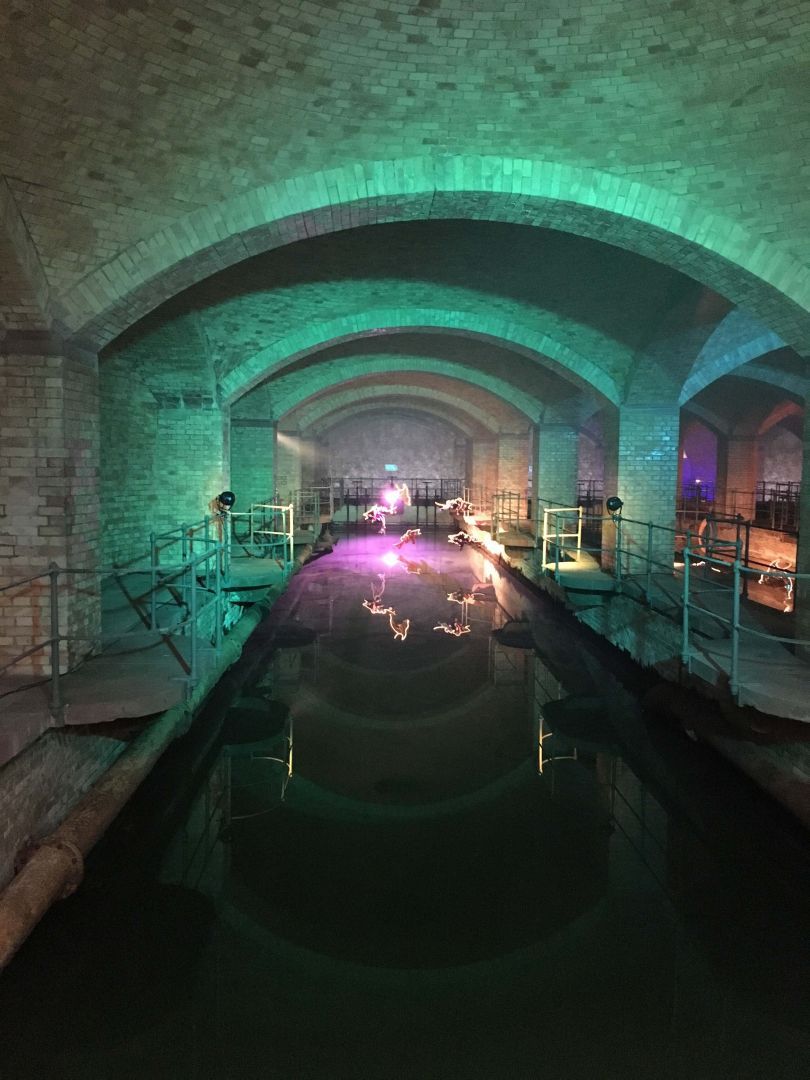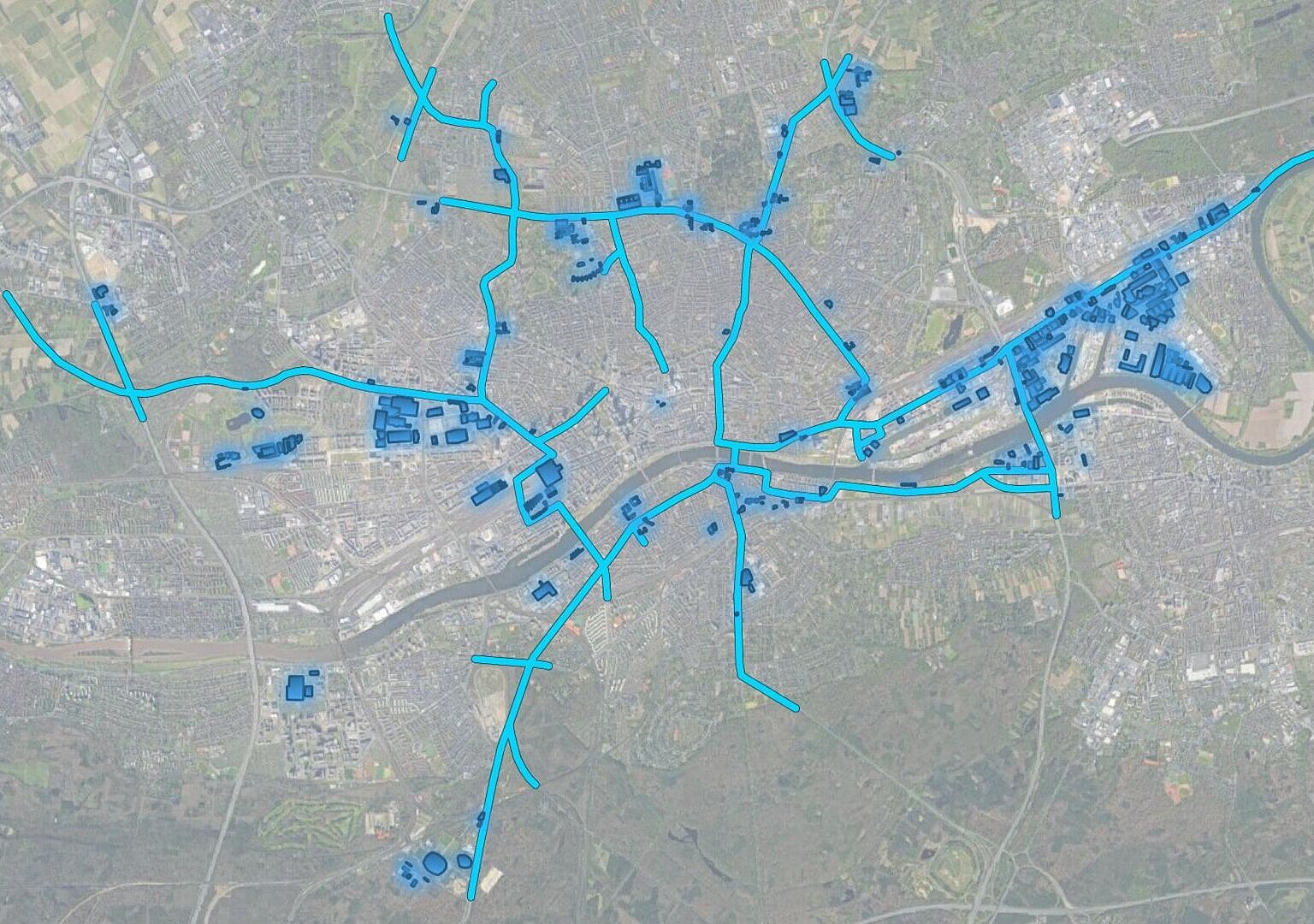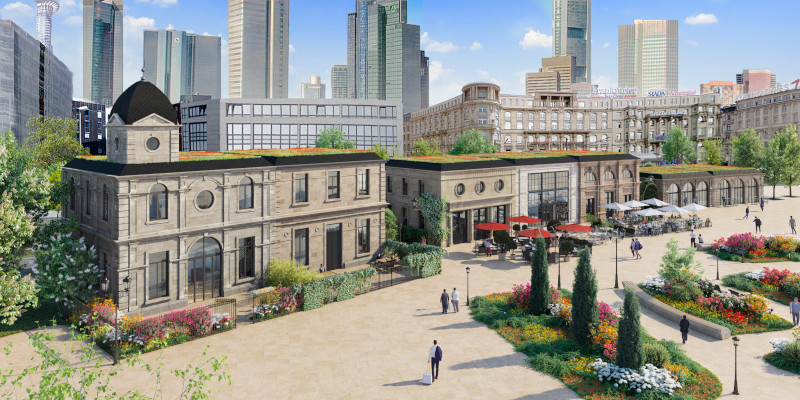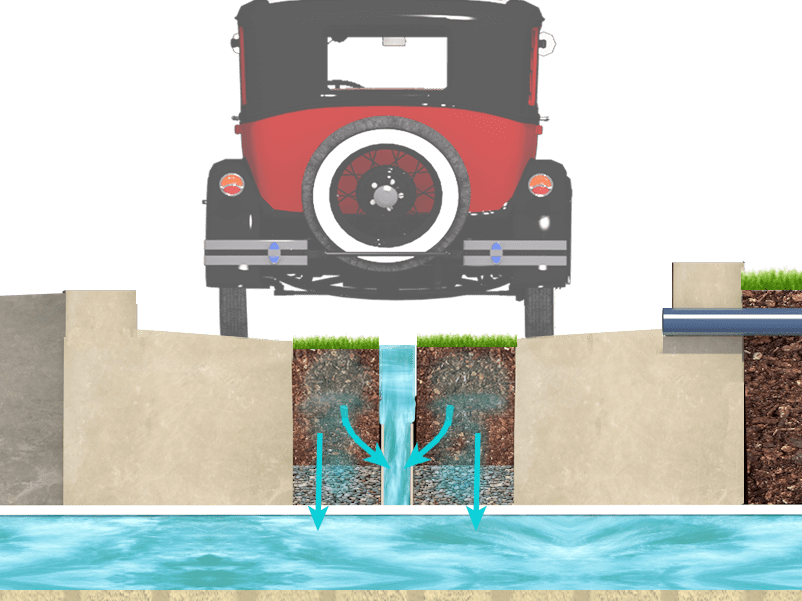Content: Which rainwater is suitable and where are potential areas for rainwater harvesting as well as temporary storage?
Rainwater from the street is usually contaminated with pollutants and tire abratson (microplastics). If one wants to avoid costly cleaning processes, it is recommended to collect roof rainwater for irrigation of green areas: both from the surfaces of the Frankfurt Bridges and from roofs of adjacent buildings and parking lot canopies.
The collection and use of rainwater in Frankfurt is currently hampered by the problem that rainwater is discharged directly at the buildings together with the wastewater into the so-called "combined sewer system". The Frankfurt Bridges solve this by temporarily storing intermittent precipitation in cisterns under the roadway along the bridge route. From these, the collected rainwater is transported via the ring main to the final storage locations (infiltration areas).
The bridges‘ ring main in combination with the bridges‘ cisterns below the roadway thus represents a "bypass" to the combined sewer system. With the comparatively clean water from the roof and bridge drainage, all of Frankfurt's green spaces can be irrigated in this way without hesitation.


